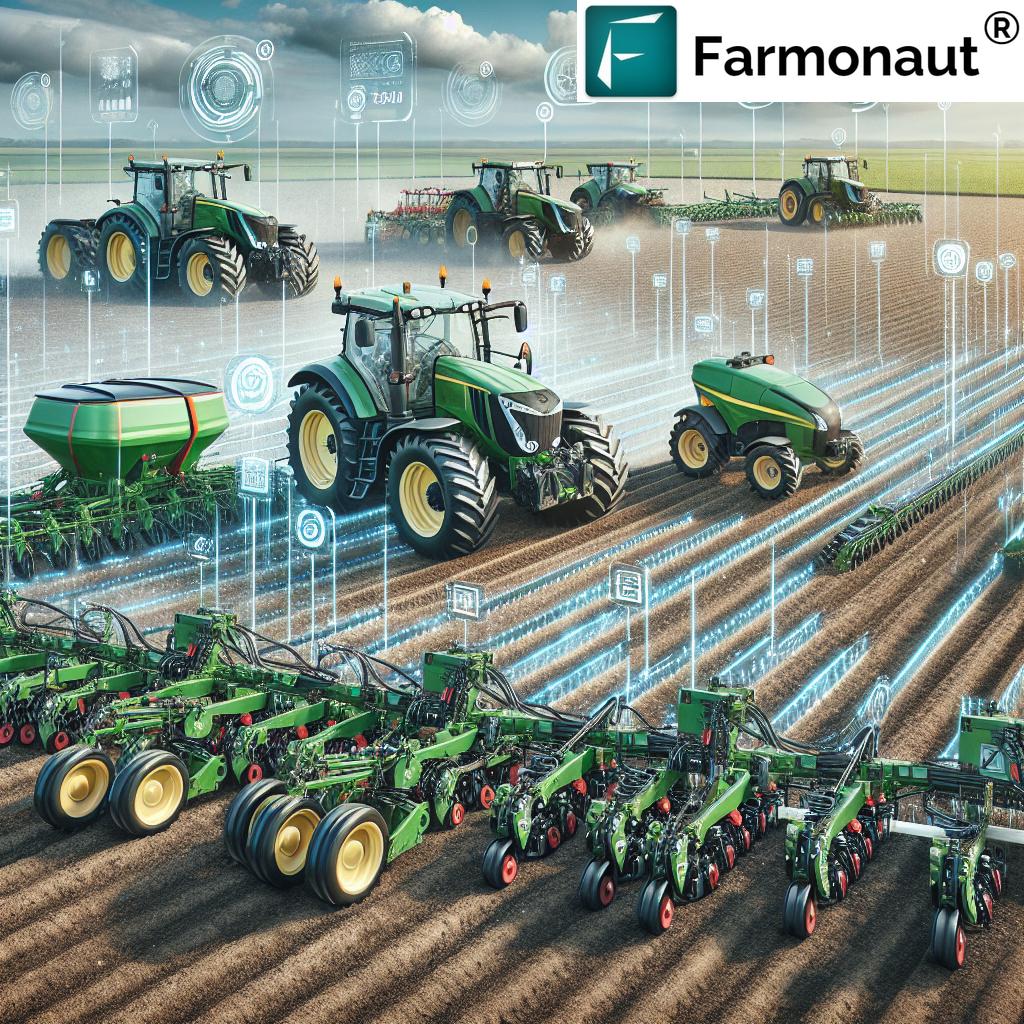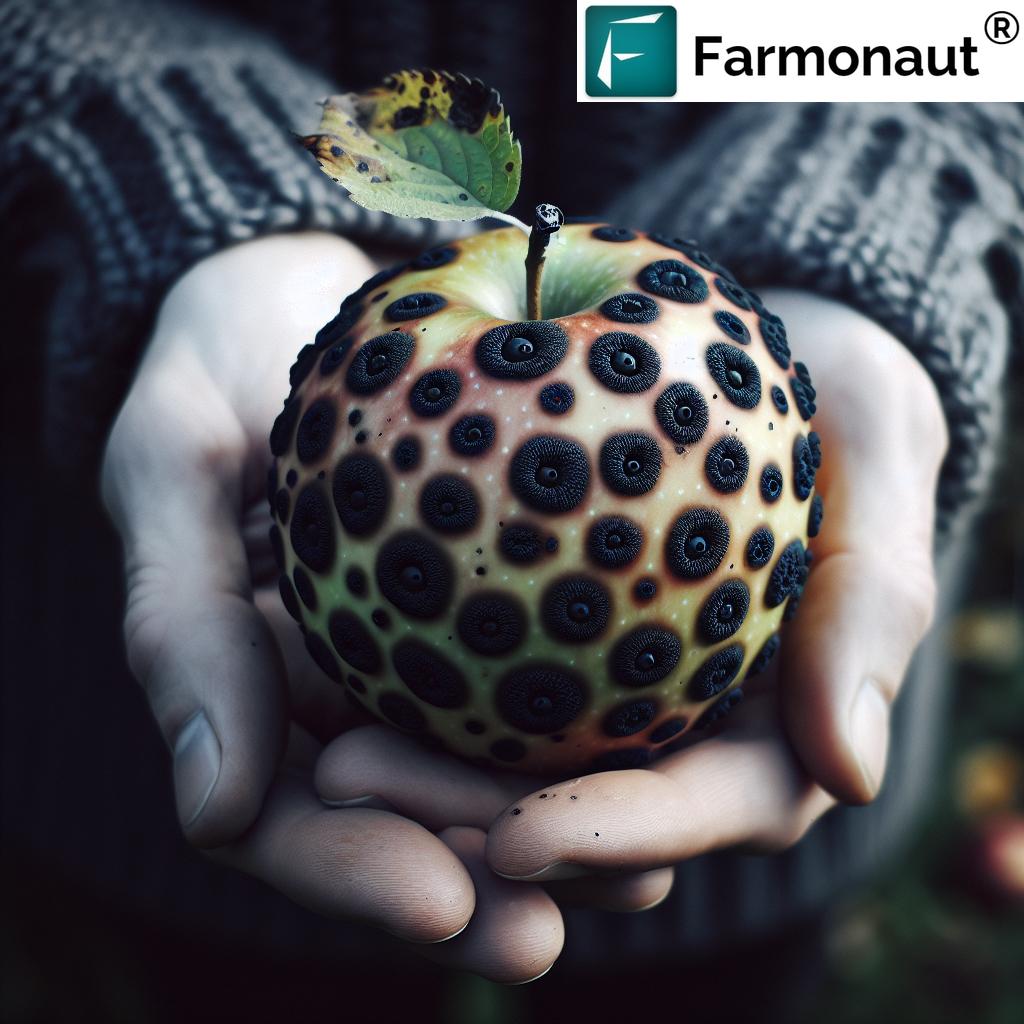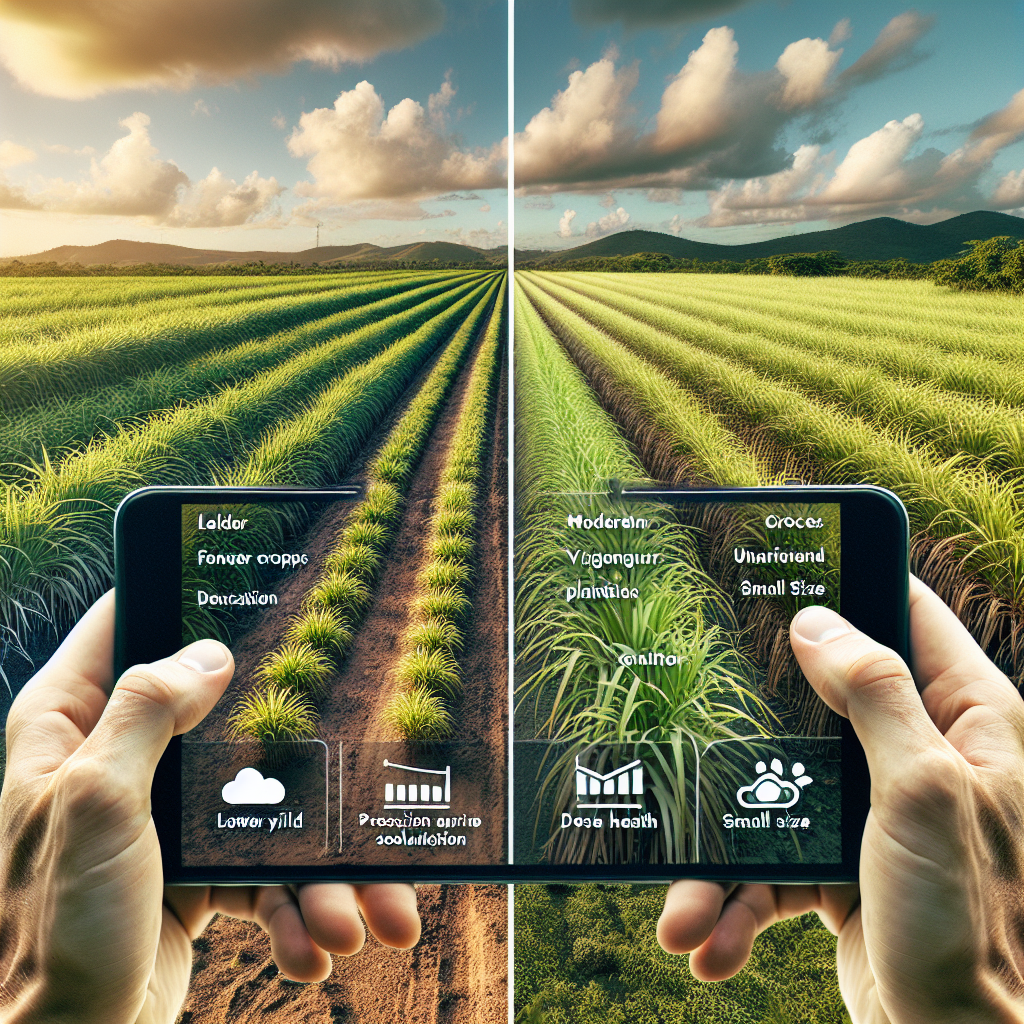Agriculture Innovation and Technology: Top 10 Trends
Introduction
Agricultural practices worldwide are undergoing a remarkable transformation. Over the last few decades, technological innovations—from precision agriculture and data-driven farming to robotics, IoT, AI, and blockchain—have fundamentally altered how we grow, monitor, and manage our food supply. The impact of these innovations reaches far beyond mere productivity gains. They address pressing challenges such as climate change, labor shortages, and the persistent need for sustainable farming practices.
In this exhaustive guide, we explore the top 10 agriculture technology trends with the greatest potential to revolutionize farming. Discover how game-changing trends like precision agriculture, automation in farming, advanced imaging, blockchain in agriculture, vertical farming systems, agrivoltaics, nanotechnology, and cutting-edge data analytics are paving the way for a future where farming is optimized for efficiency, profit, and environmental stewardship.
Comparison Table of Top 10 Agriculture Technology Trends
Precision Agriculture: Revolutionizing Decision-Making
Why Precision Agriculture is a Game Changer
Precision agriculture is at the heart of agricultural technology innovations and is redefining age-old practices in farming. Leveraging tools such as GPS mapping, remote sensing, and advanced data analytics, farmers can capture and analyze high-resolution data on soil characteristics, weather patterns, and crop health. This enables site-specific management of farming operations—optimizing resource allocation, fertilizers, pesticides, and water only where and when they are needed.
- Benefits for farmers: Enhanced yields, reduced waste, and lower costs of farming inputs.
- Reducing environmental impact in agriculture: Localized application of chemical inputs means minimal runoff and a healthier, sustainable environment.
- Data-driven farming: Continual data collection and feedback loops greatly assist in making informed decisions, decreasing guesswork and increasing efficiency.
For instance, platforms like Farmonaut harness satellite imagery for crop health monitoring, soil moisture analytics, and real-time advisory systems. We are proud to offer these services, making precision agriculture more affordable and accessible for farmers globally. Thus, precision approaches not only boost productivity but also pave the way towards sustainable farming practices.
Explore Farmonaut’s Advanced Crop Monitoring & Yield Prediction
Use Case: Farmonaut Fleet Management Tools help agribusinesses reduce operational costs by optimizing vehicle usage, tracking machinery in real-time, and ensuring safe, efficient logistics. This directly enhances the efficiency of precision agriculture systems on a larger scale.
Robotics & Automation in Modern Farming
How Robotics and Automation Revolutionize Farming Tasks
The integration of robotics and automation in farming has fundamentally transformed labor-intensive activities such as planting, weeding, and harvesting. Autonomous machines and AI-driven robots can be programmed to carry out highly specialized actions with an unrivaled level of precision—enabling farmers to focus on more strategic interventions.
- Enhanced efficiency: Dedicated robots can identify and remove weeds with targeted precision, reducing dependency on chemical herbicides and labor.
- Cost savings: Reduction in labor expenses and minimizing resource waste through automated application of irrigation, fertilizers, and pesticides only where needed.
- Improved ecological footprint: Robotics contribute to reducing environmental impact in agriculture by avoiding blanket application of chemicals and interventions.
Example: The latest generation of field robots utilizes vision systems and machine learning to differentiate between crops and weeds, adjusting interventions for yield optimization while maintaining soil health. Large scale farm management platforms support these automation trends, integrating satellite and IoT data for maximized efficiency across vast agricultural enterprises.
Drones and Advanced Aerial Imaging Solutions
The Power of Real-Time Crop Monitoring
Drones and aerial imaging technologies have become essential for data-driven farming. Equipped with multispectral cameras and advanced sensors, modern drones fly over fields capturing high-definition imagery and generating actionable insights for farmers.
- Monitoring crop health: By analyzing spectral data, farmers can identify stress, nutrient deficiencies, or pest issues early on, enabling targeted responses.
- Assessing soil and water conditions: Aerial imagery reveals subtle differences in soil moisture and composition across large tracts, supporting precise irrigation and fertilizer allocation.
- Detection and implementation: Immediate detection of pest infestations or evidence of disease allows for smarter, faster interventions that ultimately improve yields.
The implementation of drone-based monitoring by platforms such as Farmonaut takes precision agriculture a step further, combining aerial and satellite data for a holistic approach to crop health monitoring and optimization of all farming activities.
Agriculture & IoT: Transforming Data-Driven Farming
Smart Sensors for a Digital Generation of Farmers
Agriculture and IoT—the connection of smart sensors and devices to the Internet—has made real-time data collection in farming environments incredibly accessible. IoT devices monitor soil moisture, ambient climate, crop growth, and more, feeding this data into centralized analytics systems for instant access and historical trend analysis.
- Real-time monitoring: Soil and climate sensors update continuously, alerting farmers to conditions that might require intervention.
- Smart irrigation: Automated irrigation systems adjust water flow to specific zones based on live soil moisture readings, significantly reducing water waste.
- Optimized input use: Fertilizer, pesticide, and energy application are automatically tailored by machine learning, based on IoT data patterns.
By harnessing these data-driven solutions, agricultural practices become more sustainable, efficient, and profitable. Our team at Farmonaut integrates satellite and IoT feeds, combining field, weather, and environmental data to guide farmers with actionable insights for daily decisions. To learn more about how IoT and satellite data can augment your technology stack, visit the Farmonaut API or access our developer documentation.
AI and Machine Learning in Agriculture & Crop Health Monitoring
Artificial Intelligence: Precision and Sustainability in Action
Artificial intelligence (AI) and machine learning represent the backbone of the next generation in agriculture. By analyzing historical and real-time data, AI models can identify patterns undetectable to the human eye, automating complex decisions related to crop yields and farm optimization.
- Disease and pest diagnosis: AI-driven image analysis can accurately detect plant diseases, pest infestations, and growth anomalies, recommending optimal treatments and reducing crop loss.
- Yield forecasting: Algorithms process data from multiple sources (satellite, drones, sensors) to predict harvest output and anticipate patterns in productivity.
- Resource optimization: Variable-rate input strategies, generated by machine learning, ensure that every drop of water, fertilizer, and energy is optimized for maximum yield with minimum waste.
Our Jeevn AI advisory system exemplifies this evolution. The system analyzes satellite imagery and environmental data to generate personalized, context-aware suggestions for farmers. In addition to yield forecasts, Jeevn AI provides recommendations for irrigation, fertilization, and pest control—tailored to the unique conditions of each plot. This is the power of AI in creating sustainable farming practices accessible via apps and APIs.
The Role of Artificial Intelligence in Agriculture – Farmonaut | Agritecture | Joyce Hunter
Benefit: Our carbon footprint management solutions utilize AI and machine learning to track, report, and reduce emissions in your agricultural operations—supporting compliance, sustainability, and brand reputation.
Vertical Farming Systems & Controlled Environments
The Future of Urban Agriculture and Food Security
Vertical farming systems bring a paradigm shift in growing crops by moving them indoors, stacking layers in hydroponic or aeroponic environments. With precise control over light, temperature, nutrients, and humidity, vertical farms maintain high-yield production regardless of season or climate—with up to 90% less water usage compared to traditional fields.
- Urban agriculture: These systems allow farming even in densely populated cities with little arable land, reducing “food miles” and bolstering regional food security.
- Elimination of pesticides: Controlled environments prevent most pests and diseases, removing the need for chemical inputs.
- Efficient resource use: Closed-loop systems recycle water and nutrients, further reducing waste and environmental impact.
Controlled vertical farming facilities are ideal for growing high-value crops and fresh produce. The data-driven approach, combined with AI-led resource management, means every aspect of production is monitored and optimized, yielding consistent, high-quality harvests year-round.
Tip: For clients exploring advanced plantation and forest advisory alongside urban-focused vertical methods, our crop plantation advisory offerings deliver actionable data and crop health insights for optimizing production.
Agrivoltaics: Solar Panels for Energy-Efficient Farming
Synergy between Agriculture and Renewable Energy
Agrivoltaics is the innovative concept of integrating solar panels directly with agricultural production. By mounting solar panels above crops, farmers harness dual benefits—generating clean, renewable energy while providing shade that can protect sensitive crops from heat and reduce water evaporation.
- Increased land-use efficiency: Dual-use of the same land for energy and food increases overall productivity per acre.
- Reduction in water usage: Shaded areas reduce water loss from evaporation, crucial in arid regions.
- Improved crop resilience: Crops grown under solar panels, such as lettuce and tomatoes, often thrive thanks to moderated microclimates.
- Renewable revenue streams: Selling excess solar power augments farm income, diversifying profitability.
Agrivoltaic systems are especially promising for regions facing climate volatility. Carefully planned projects leverage advanced analytics to assess the optimal arrangement for both panels and crops, ensuring maximum sunlight for electricity while supporting plant health and yield optimization.
Nanotechnology: Nano Fertilizers and Nano Sensors
Small-Scale Solutions for Big Environmental Gains
Nanotechnology introduces revolutionary nano fertilizers and nano sensors as agricultural tools. By manipulating materials at the nanometer scale, these innovations ensure efficient delivery of nutrients and ultra-sensitive monitoring for pests, pathogens, and soil conditions.
- Nanofertilizers: Engineered particles deliver nutrients in a targeted, controlled manner, reducing environmental runoff and maximizing plant uptake for better crop health.
- Nanosensors: Embedded in soils or attached to crops, these sensors continuously monitor environmental parameters, signaling early warnings for disease outbreaks or chemical imbalances.
- Precision interventions: Farmers receive pinpoint alerts, enabling minimal, targeted use of chemicals and water.
Not only do these technologies contribute directly toward reducing environmental impact in agriculture, but they also lead to cost savings by minimizing waste and optimizing the application of expensive farm inputs.
Blockchain in Agriculture: Enhancing Traceability
Building Trust through Digital Transparency
Blockchain in agriculture solves a critical need for trust and traceability in the agricultural supply chain. Each transaction—from planting to harvest, storage, processing, and distribution—is securely recorded in an immutable database, accessible to stakeholders and consumers alike.
- Food safety: Contaminated batches can be quickly traced to source, protecting consumer health and brand reputation.
- Fraud prevention: Immutable records help prevent counterfeiting and risky substitutions in agricultural products.
- Consumer confidence: Shoppers verify origin, handling, and certification directly—building brand loyalty and price premiums.
Our traceability solutions use blockchain to enhance transparency for food brands, textile companies, and agribusinesses. Every step from farm to factory is documented, verified, and shared securely. To upgrade your compliance and build ethical supply chains, explore our traceability product page.
Integration: Blockchain advances are often bundled with satellite-based monitoring for independent verification of farm practices, further increasing consumer trust and supply chain resilience. If you need sat-based certification for crop loans and insurance, visit our crop loan & insurance page.
Challenges and Considerations in Agriculture Technology Adoption
Even though the benefits of agricultural technology innovations are immense, widespread adoption is not without obstacles.
- Initial investment costs: Purchasing, installing, and training in advanced technologies can be costly, especially for smallholder farmers and those in developing regions.
- Technical complexity: Mastering digital tools often requires education, ongoing support, and adaptation of new skills.
- Data privacy and security: As more farm operations move online, safeguarding sensitive data becomes a key concern for farmers and organizations.
- Digital divide: Limited internet connectivity and infrastructure in rural areas threaten equitable access to technological solutions.
Addressing these issues demands forward-thinking policies, investment in rural connectivity, farmer education, and the design of affordable, user-friendly solutions.
Farmonaut’s Role in Precision Agriculture Innovation
At Farmonaut, we are dedicated to democratizing access to precision agriculture through our advanced suite of agricultural technology innovations:
- Satellite-based crop health monitoring: Real-time NDVI analytics help farmers track crop health, soil moisture, and promptly identify pest or disease outbreaks.
- Jeevn AI advisory: Harnessing AI and machine learning, we deliver personalized farm advice—weather predictions, crop stage predictions, and input recommendations.
- Blockchain-based traceability: Our platform supports secure supply chain documentation for agricultural commodities, textile firms, and food brands.
- Fleet management and resource optimization: Track and optimize farm assets, operations, and logistics for maximum efficiency and reduced operational costs.
- Carbon footprinting: Our solutions allow clients to monitor and minimize on-farm emissions—advancing compliance and sustainability.
Our commitment is to make these cutting-edge technologies affordable and accessible, empowering farms of every size to thrive in an increasingly digital, sustainable, and globally connected world.
FAQs: Agricultural Technology Innovations Explained
-
What is precision agriculture?
Precision agriculture is a farming approach that uses advanced technologies such as satellite imagery, sensors, and data analytics to optimize input use (water, fertilizers, pesticides) for each part of a field, resulting in higher yields, cost savings, and reduced environmental impact. -
How do drones help farmers?
Drones equipped with multispectral cameras provide aerial views of fields, enabling early detection of crop stresses, pest infestations, and uneven irrigation. This helps farmers implement timely, targeted interventions. -
What does “blockchain in agriculture” mean?
Blockchain in agriculture refers to the use of digital ledgers to record every transaction or movement of goods in the supply chain. It ensures transparency, traceability, and can reduce fraud or errors in record-keeping. -
Why are AI and machine learning important in agriculture?
AI and machine learning can analyze massive agricultural datasets, identify patterns, forecast yields, predict disease risks, and tailor resource application—boosting efficiency, reducing costs, and supporting sustainable farming practices. -
Are the latest agricultural technologies suitable for small farmers?
Yes. While some innovations require investments, platforms like Farmonaut offer affordable, subscription-based access to satellite, AI, and crop advisory tools—empowering smallholder farmers to benefit from precision agriculture. -
What role does IoT play in agriculture?
IoT devices like climate monitors, soil sensors, and automated irrigation systems deliver real-time insights, optimize resource use, and enable farmers to make informed decisions on the fly. -
How does vertical farming contribute to sustainability?
Vertical farming uses less land and water, eliminates the need for harmful chemicals, and brings fresh produce closer to urban consumers—reducing environmental impact and improving food security.
Conclusion
The landscape of agriculture is evolving at an unprecedented pace, thanks to disruptive technological innovations in precision agriculture, automation, IoT, AI, blockchain, and more. These technologies empower farmers to make informed, data-driven decisions, optimize resource use, and meet sustainability goals while increasing yield and reducing costs.
However, the future of farming also hinges on overcoming barriers such as cost, complexity, and digital infrastructure gaps. Through ongoing investment in research, technology development, and farmer education, the global agriculture sector can realize a more sustainable, productive, and resilient future—benefiting both people and planet.
As we continue our mission to make precision agriculture accessible, the Farmonaut platform remains at the forefront—offering affordable, scalable, and easy-to-use solutions that allow both smallholder and large-scale operators to thrive in a data-driven era of farming. The future of agriculture is innovative, interconnected, and sustainable.















